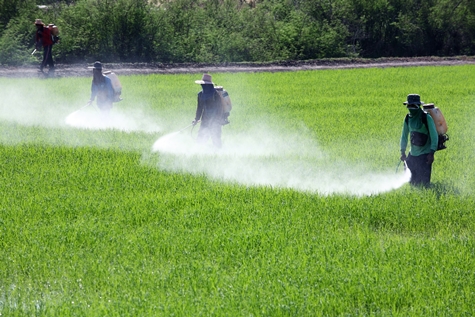Global Cooperation Needed to Ensure Harmonized Pesticide Levels
By Caleigh Irwin
In a world where global food supply chains are deeply intertwined, there is one issue that has a huge impact on agriculturally-related food safety and trade in North America and around the world: the Maximum Residue Limits (MRLs) of pesticides. MRLs are determined for the import and export of all food and feed commodities. They enable regulatory bodies to ensure pesticides are being used within legally established limits, and to safeguard human and environmental health and safety. In Canada, Health Canada takes the lead on the issue through the Pest Management Regulatory Agency (PMRA), which sets science-based MRLs to ensure that the food Canadians eat is safe. All MRLs are set for pesticide-crop combinations at levels that are well below the amount that scientists know would cause concern.
Different Standards for Safe Maximum Residue Limits
The challenge is that different countries have different standards for safe levels of MRLs and this lack of alignment inhibits trade and raises the question of whether consumers in some countries have the privilege of safer food than is available in other countries. For example, Nova Scotia used to export apples to the European Union (EU). However, the EU dropped its MRL for diphenylamine, a common storage treatment for apples, to 0.01 parts per million (ppm). In Canada, the MRL for diphenylamine is set at 5 ppm, while in the US, the MRL is set at 10 ppm. The regulatory change meant apple growers in Nova Scotia could no longer export to the EU.
This is not an isolated incident and many growers feel that harmonization of MRLs across countries could both facilitate trade and ensure greater food safety standards for all.

The Codex Alimentarius Commission
the Food and Agriculture Organization (FAO) and the World Health Organization (WHO) established the Codex Alimentarius Commission as a way to deal with contradictory or unscientific food standards regulation. This Codex system enables countries to work together to develop international standards. Currently, Codex has scientifically established 4347 MRLs for pesticide residues covering 196 pesticides.
When a country doesn’t have the resources for extensive scientific testing, or when an MRL is missing from their domestic standards, it can opt to align with the Codex standards. There are also references to Codex systems in a number of international trade agreements, such as the Trans-Pacific Partnership (TPP), and the Comprehensive Economic and Trade Agreement (CETA). However, a true world standard has not yet been accepted, and many countries, including Canada and the United States, still rely on their own internal systems which, as we’ve seen, are not always harmonized with others.
Through Codex, the path to harmonization has begun, but it’s proving difficult to keep up with the ever-changing and increasing demands of food commodities. Use of the Codex MRLs, collaborating on completing them, and adopting them, would be a way for all countries to move closer to harmonization.
About the Author
Caleigh Irwin is the Manager, Crop Protection, at the Canadian Horticultural Council. At CHC, she oversees the Crop Protection Advisory Group, and works closely with growers, industry, government, and academia to tackle crop protection issues across Canada. Caleigh did her MSc at the University of Guelph in applied entomology. Prior to CHC, Caleigh worked at a Toronto start-up where she managed the biological research and development of crop protection products.




